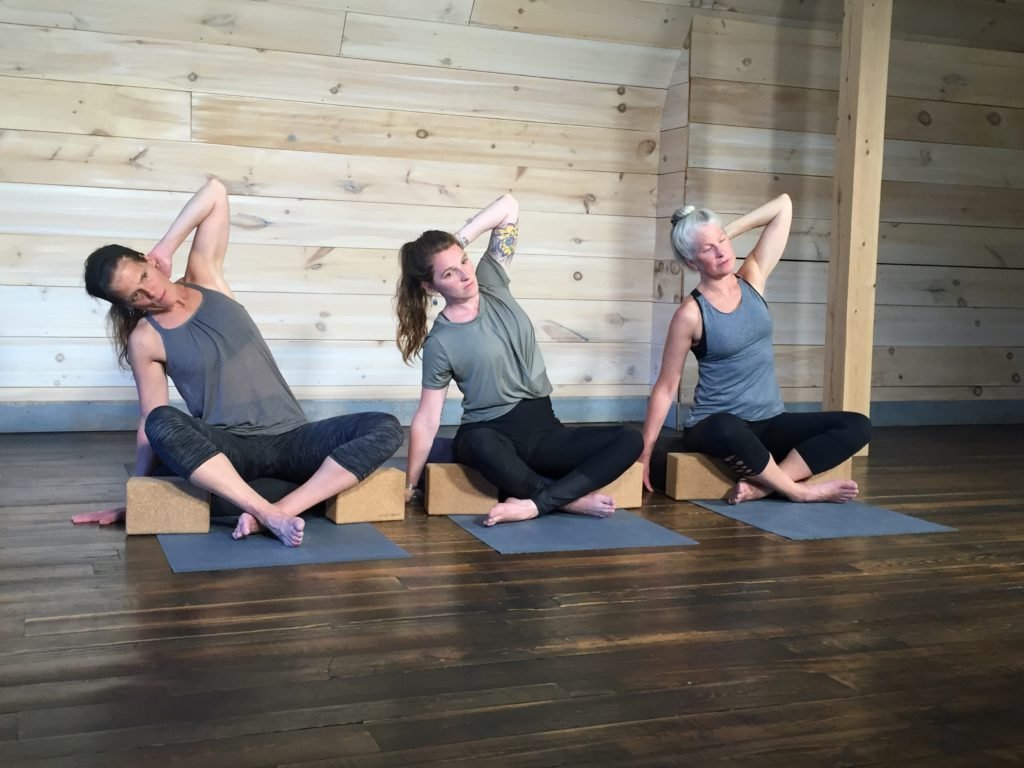As a yoga teacher, I hear one thing all the time: “I can’t do yoga because I’m not flexible!” People say this before they’re diagnosed with cancer, or even if they are not given a cancer diagnosis. A flexible body is a useful body because we can do more with it, moving bones freely and without pain. We want to be able to reach for that shoebox on the top shelf, or bend over to tie our shoes.
Cancer treatments, however, can reduce flexibility because surgeries and radiation create scar tissue around muscles and joints. The scarring can make the body stiff and painful to move. Other treatments like chemotherapy and hormone therapy create joint stiffness, which decrease the body’s ability to bend, limiting the muscles and bones’ ability to work together efficiently. All of these problems make life’s daily and necessary functions difficult, such as being able to walk the dog, or to move a chair. In fact, we consider ourselves recovered from cancer when we have resumed ‘normal’ activities.

A yoga practice will improve flexibility, making movement easier. Like a parked car that will not move if it sits on its wheels for eight months, we must keep the joints moving and the muscles stretching, or they “rust.” (Actually, if we do not use muscles, they deteriorate more rapidly than we imagine.) What we learn is how to become more flexible by changing habits that prevent flexibility as well as how to protect ourselves as we reach our goals. This approach is designed to increase flexibility, and to regain and maintain mobility in daily life.
My y4c methodology looks at body movement in a logical, patterned way. Movements are slow and gentle, supported with careful attention placed on to where the bones are moved and with what muscles. Increasing range of motion happens by alternating the extention and flextion of muscles combined with patterned movement. You will learn how to explore your range of motion and be given guidelines to help you through various stages to regain range of motion, strength, and flexibility in general. You will also learn how to use passive, restorative poses and gravity to increase flexibility, as these use well-supported poses to soothe muscles. Gradually, you will go about daily life activities with less pain and more confidence.
Excerpt from ‘Yoga for Cancer: A Guide to Managing Side Effects, Boosting Immunity, and Improving Recovery for Cancer Survivors’ by Tari Prinster. Purchase your copy today.

